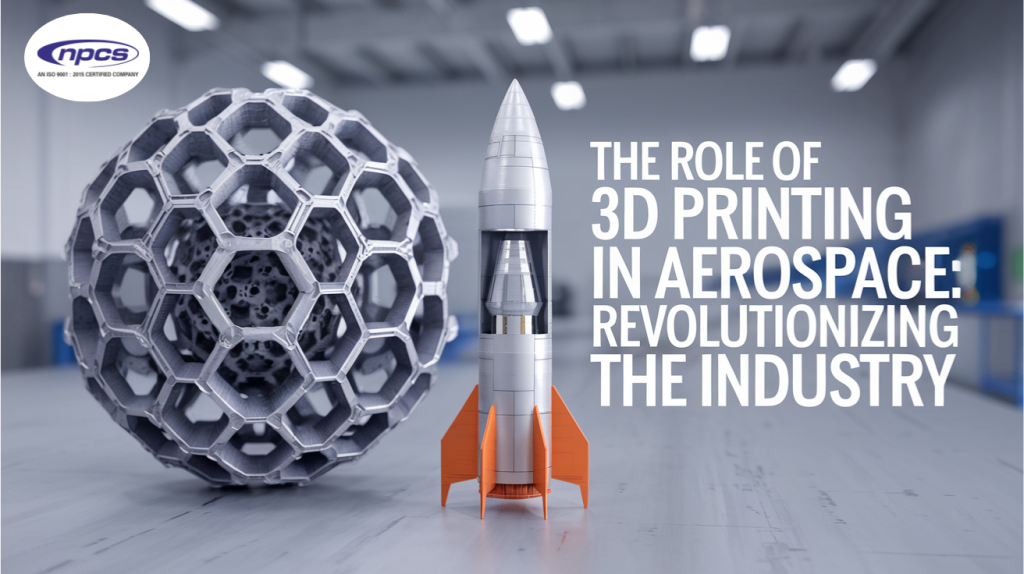The aerospace industry is a historically relevant and cutting-edge innovative area. In the past few years, one of the most transformative technologies has been 3D printing in Aerospace. Notably, this application has given birth to new ways of designing, manufacturing, and maintaining aircraft and spacecraft. In this article, we will discuss how the 3D printing will transform and drastically change the industry to effect cost savings while improving performance and efficiency.
For any Business related Query: Visit NPCS
What is 3D Printing in Aerospace?
3D printing in Aerospace is the application of additive manufacturing (AM) techniques for building components and parts for aircraft, spacecraft, and other aerospace systems. Unlike present manufacturing practices, 3D printing builds complex geometries through high-precision layering from metals, plastics, and composites. In this way, the manufacturers can make components lightweight, durable, and highly customized, which would hardly be possible with traditional manufacturing..
Related Business Plans: Business plans on different manufacturing Industries
The Advantages of 3D Printing in Aerospace
- Reduced Weight and Improved Fuel Efficiency
One of the main benefits of 3D printing in Aerospace is the ability to produce extremely lightweight components. With the development of new materials and new designs, it offers the possibility of increasing the performance of a part while reducing its weight. Such an approach has a direct impact on fuel consumption, something that is critical to both commercial and military aircraft. - Cost Reduction in Production
At present, 3D printing helps save money as well. In fact, conventional manufacturing methods require expensive tooling and castings of components for machining. Different 3D printing technologies are capable of eliminating tooling requirements, thus, making production cost-effective in aerospace. Furthermore, on-demand printing of components reduces waste production and consequently cuts down costs. - Faster Production and Customization
Another advantage of the 3D printing sector is the short length of time required for producing parts. The most complex pieces take traditional manufacturing tens, or even hundreds, of weeks to build. Thanks to a 3D printer in Aerospace lead times can significantly lessen since this means speedy prototyping and production. Not only does it give flexibility in design, however, it can also customize parts that can be manufactured according to engineers’ specific requirements and designs. - Enhanced Design Flexibility
3D printing in Aerospace field allows engineers to design parts with previously unimaginable geometries in conventional manufacturing methods. Hence, it offers freedom of design that would realize the manufacture of parts with better mechanics, such as an optimized internal structure reducing weight and maintaining strength. In these ways, more complex designs are possible, which open the possibility of achieving more aerodynamic and efficient aircraft and spacecraft.
Related article: How to Start a Small Scale Business in India: A Step-by-Step Guide
Applications of 3D Printing in Aerospace
- Aircraft Parts and Components
Using 3D printing, most parts of an aircraft may be produced in the aerospace industry. Manufacturers are capable of printing incredible engine parts to interior fittings, each with a very high degree of precision and customization. For example, turbine blades, fuel nozzles, or even air ducts were manufactured through the printing applications, with importance to how performance-efficient an aircraft would behave. - Spacecraft Manufacturing
3D Printing in Aerospace applied does not stop at the manufacture of Earth-bound aircraft, but extends to spacecraft, as well. NASA and other space agencies are now actively developing applications of 3D printing in the construction of spacecraft parts, such as structural components for tools and habitats for astronauts. Also, since those components may be manufactured at the moment needed, they do not need to be shipped in large quantities, resulting in more efficient and cost-effective space missions. - Maintenance and Repair
This is another area of aerospace in which 3D printing becomes important: maintenance and repair. Indeed, when a component failed in the past, the solution could require replacement that was very long and costly. Damage parts can be duplicated very quickly due to the 3D printing , allowing replacement from even the most remote locations. This improvement has become particularly beneficial in military and space activities where parts can be printed on-site to reduce the time and cost of keeping units operational.
Also Visit: Market Research Reports
Challenges and Future
Using 3D printing in aerospace is not without its advantages, but the safety regulations make it all the more complicated to prove compliance with those regulations. Furthermore, an area of research ongoing is more robust and lighter materials for 3D printing for aerospace applications. At present, the basic materials used are titanium and aluminum, although there are advancements in materials used for aerospace applications. While there may be obstacles, the future of 3D printing is bright with technology advances along with industry standards. Innovations in the area of design, manufacturing, and maintenance of aircraft and spacecraft shall thrive with the use of 3D printing.
For Business related Videos: Visit Entrepreneur India
Conclusion
3D printing consolidation in aerospace is livelier than ever, as the industry is always looking for more ways to be efficient, cut costs and push design limits. With its ability to create lightweight, customized, and complex components, the method is now becoming the norm for constructing and maintaining aircraft and spacecraft. As the technology continues to evolve, so will the trend of 3D printing in Aerospace.
Manufacturers now can create aerospace solutions that are efficient, cost-effective, and most importantly sustainable, thus shaping the future of air and space travel by using the power of 3D printing.

